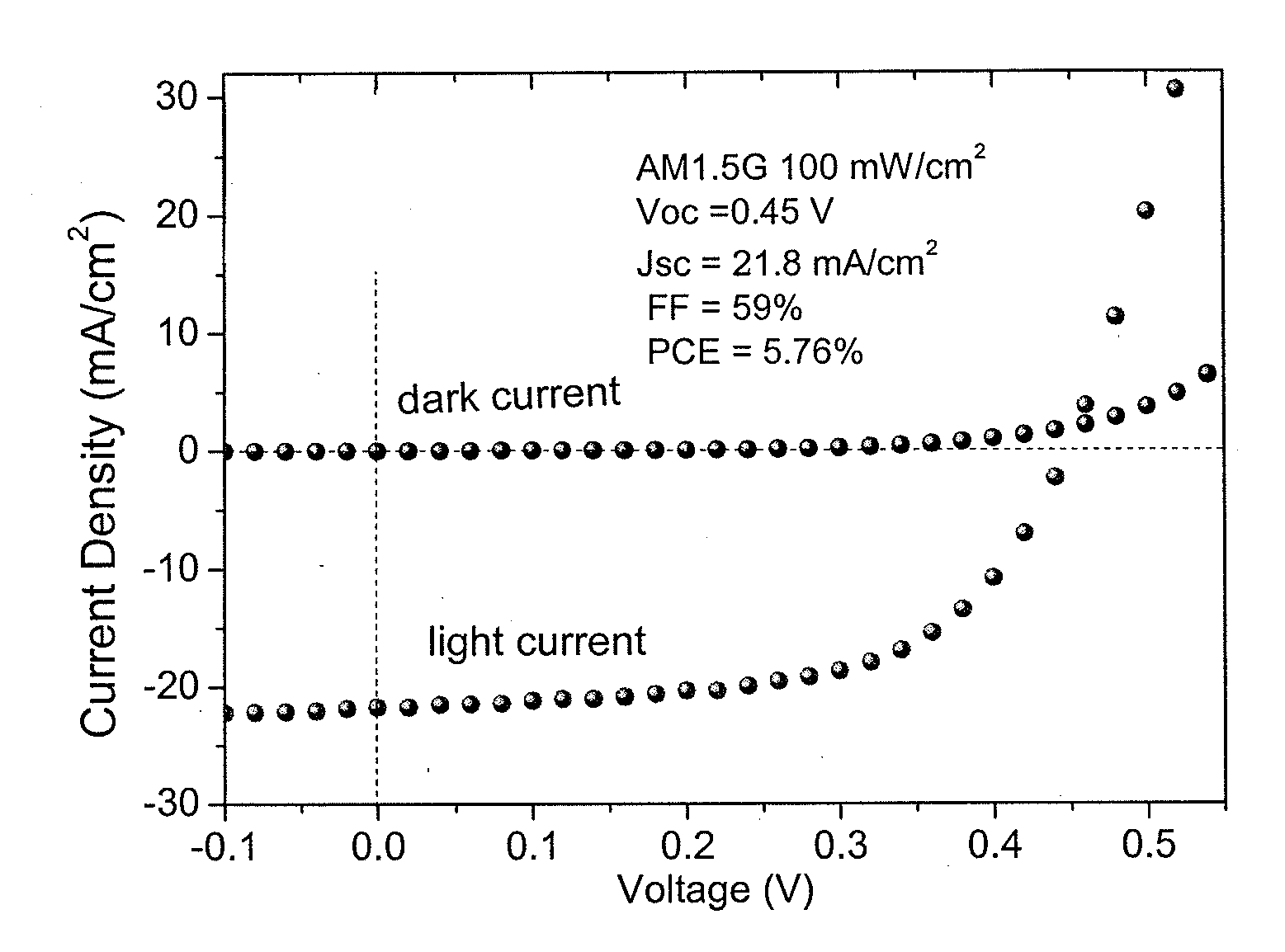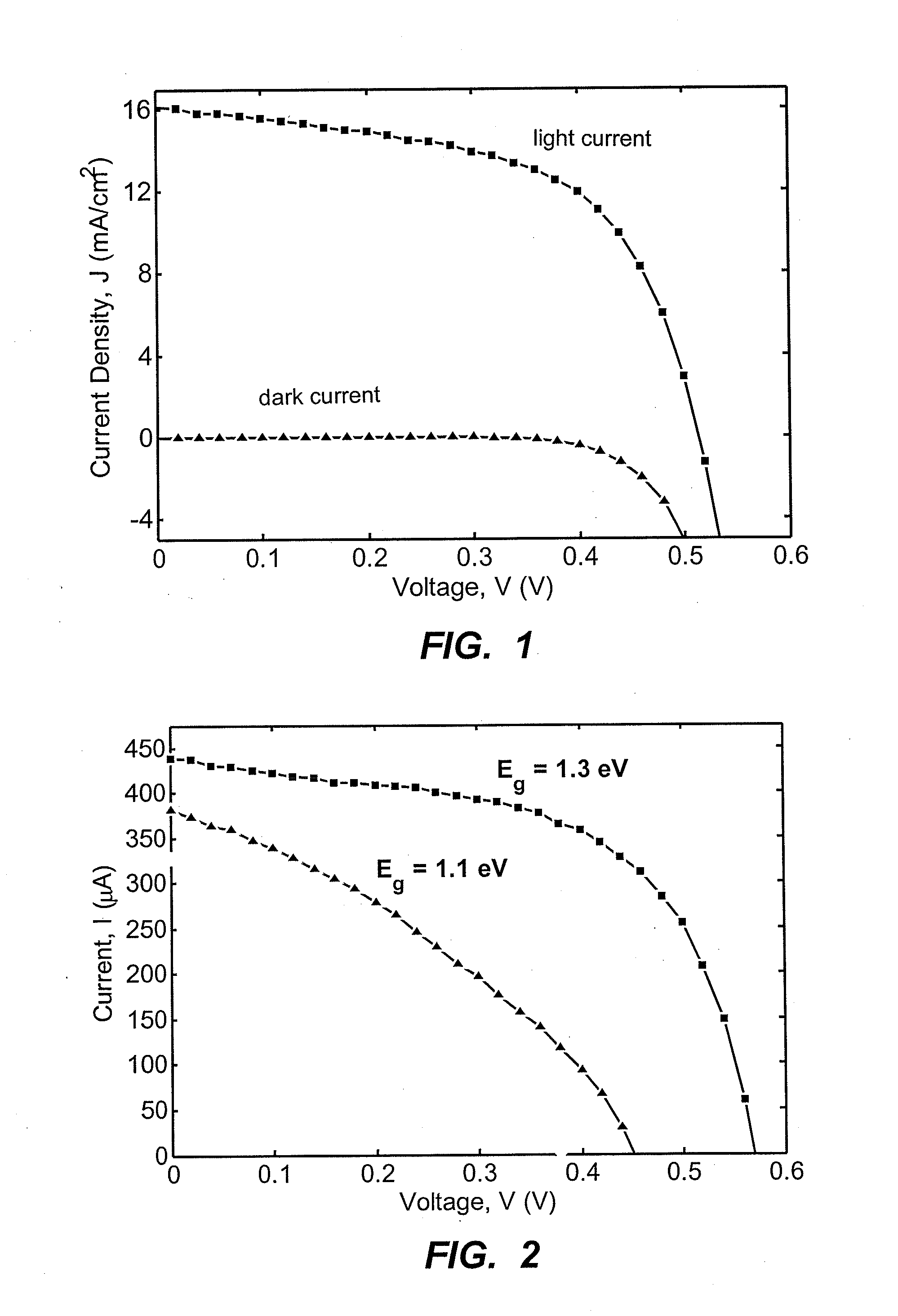Photovoltaic devices with depleted heterojunctions and shell-passivated nanoparticles
a photovoltaic device and heterojunction technology, applied in the field of photovoltaic cells and quantum dots, to achieve the effects of less susceptible, better defined, and easy passivation
- Summary
- Abstract
- Description
- Claims
- Application Information
AI Technical Summary
Benefits of technology
Problems solved by technology
Method used
Image
Examples
example 1
[0025]This example illustrates the preparation of depleted heterojunction photovoltaic cells within the scope of the present invention, each formed by depositing a layer of PbS colloidal quantum dots (approximately 1017 cm−3 n-type doping) of varying diameters—3.7 nm (bandgap 1.3 eV), 4.3 nm (bandgap 1.1 eV), and 5.5 nm (bandgap 0.9 eV)—over transparent TiO2 electrodes.
[0026]The TiO2 electrodes were prepared on SnO2:F (FTO)-coated glass substrates (Pilkington TEC 15, Hartford Glass, Inc., Hartford City, Ind., USA) with a TiO2 paste (DSL-90T, Dyesol Ltd., Queanbeyan, NSW, Australia) as follows. The FTO substrates were first rinsed with toluene, then sonicated for twenty minutes in a mixture of Triton in de-ionized water (1-3% by volume). Separately, a TiO2 paste was prepared by combining one part by weight TiO2 nanoparticles with three parts by weight terpineol. The paste was then spin cast at 1500 rpm for ninety seconds on the TiCl4-treated FTO substrates. One edge of each substrate...
example 2
[0033]This example illustrates the preparation and use of nanoparticles containing a quantum dot core, an inner shell of cations and an outer shell of anions, within the scope of the present invention.
[0034]Colloidal quantum dots capped with oleic acid ligands were synthesized and stripped of their oleate ligands, in the manner described in Example 1. These quantum dots were prepared with an excess of Pb during synthesis, resulting in a lead-rich bulk composition but with sulfur atoms on their surfaces, either from nonpolar {100} and {110} or polar {111} facets in their crystal structure. To form the inner shell of Cd cations over these PbS cores, the nanoparticles were treated with a solution of CdCl2-tetradecylphosphonic acid-oleylamine (CdCl2-TDPA-OLA). This treatment resulted in a slight redshift (between 6 and 24 nm) of the excitonic absorption, suggesting growth of a partial monolayer of highly cation-rich material on the surface, an interpretation reinforced by the approximat...
PUM
 Login to View More
Login to View More Abstract
Description
Claims
Application Information
 Login to View More
Login to View More - R&D
- Intellectual Property
- Life Sciences
- Materials
- Tech Scout
- Unparalleled Data Quality
- Higher Quality Content
- 60% Fewer Hallucinations
Browse by: Latest US Patents, China's latest patents, Technical Efficacy Thesaurus, Application Domain, Technology Topic, Popular Technical Reports.
© 2025 PatSnap. All rights reserved.Legal|Privacy policy|Modern Slavery Act Transparency Statement|Sitemap|About US| Contact US: help@patsnap.com



